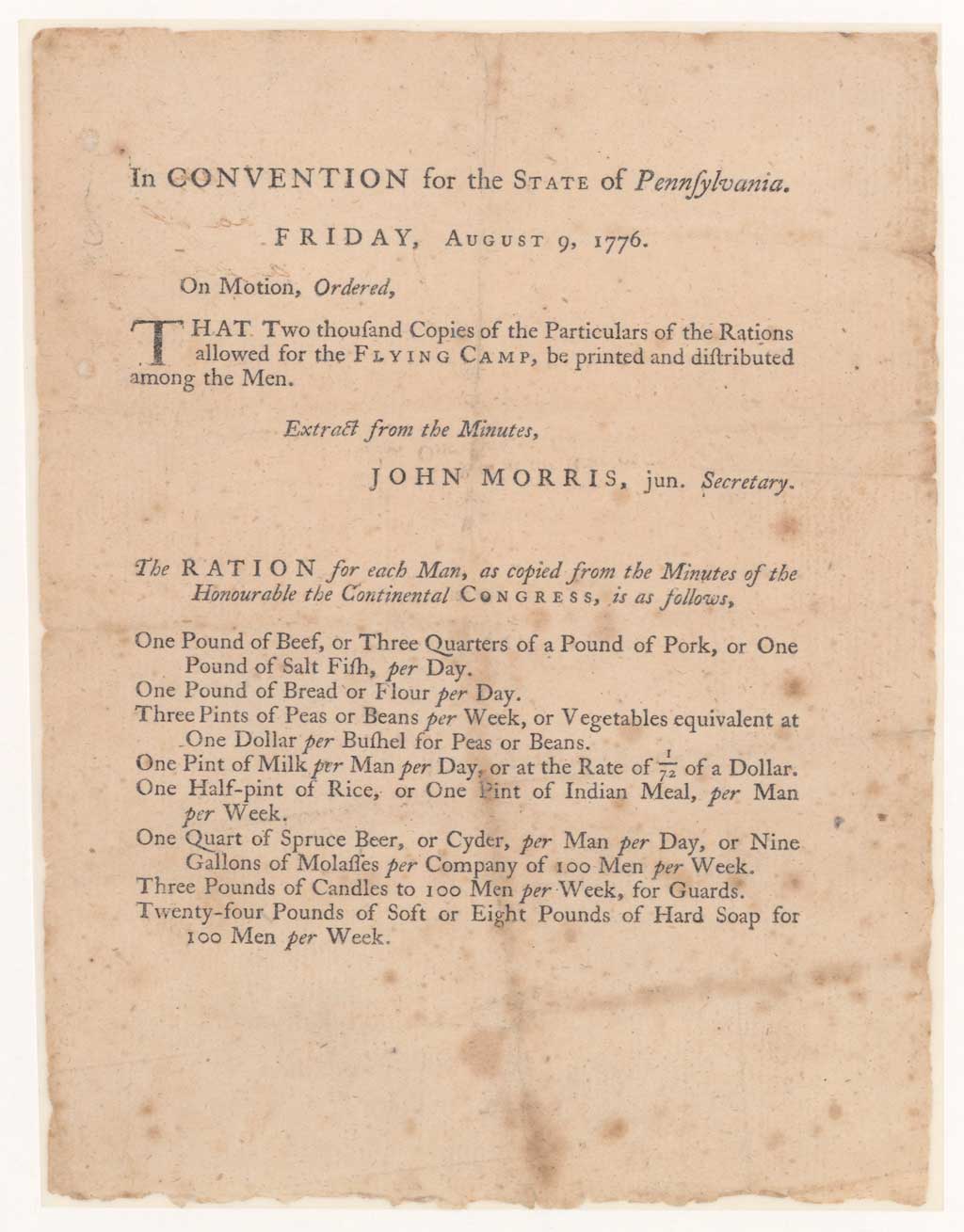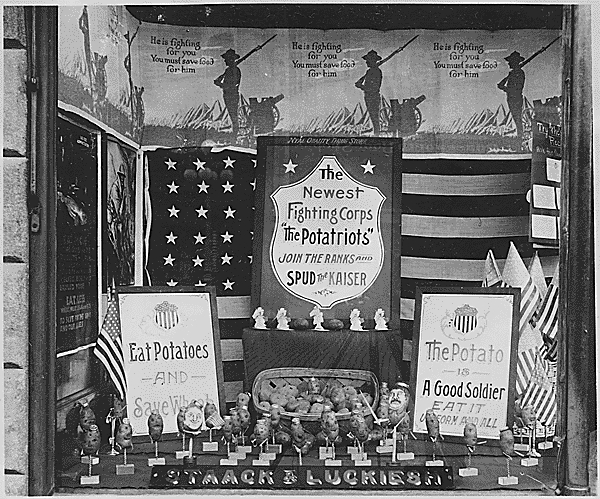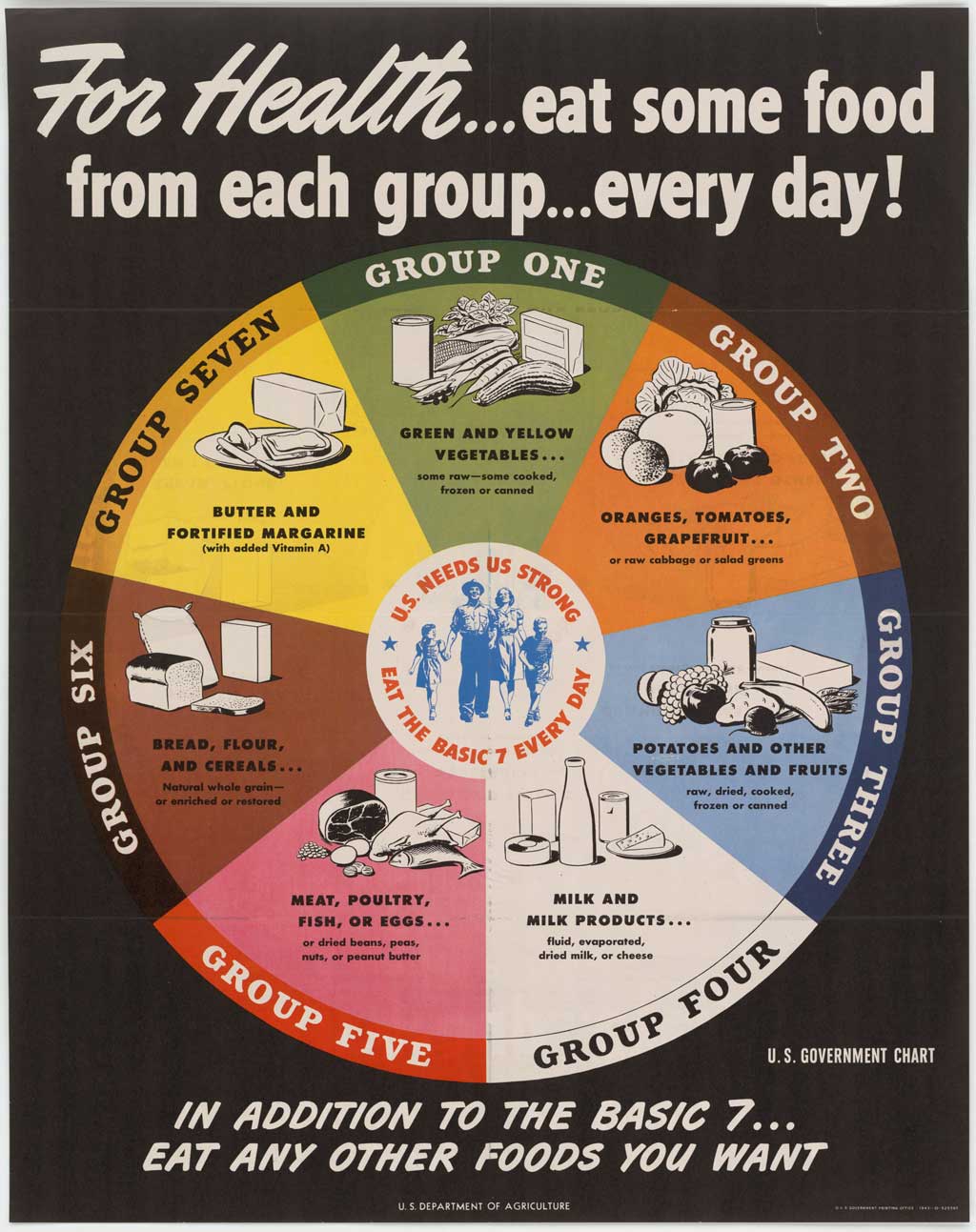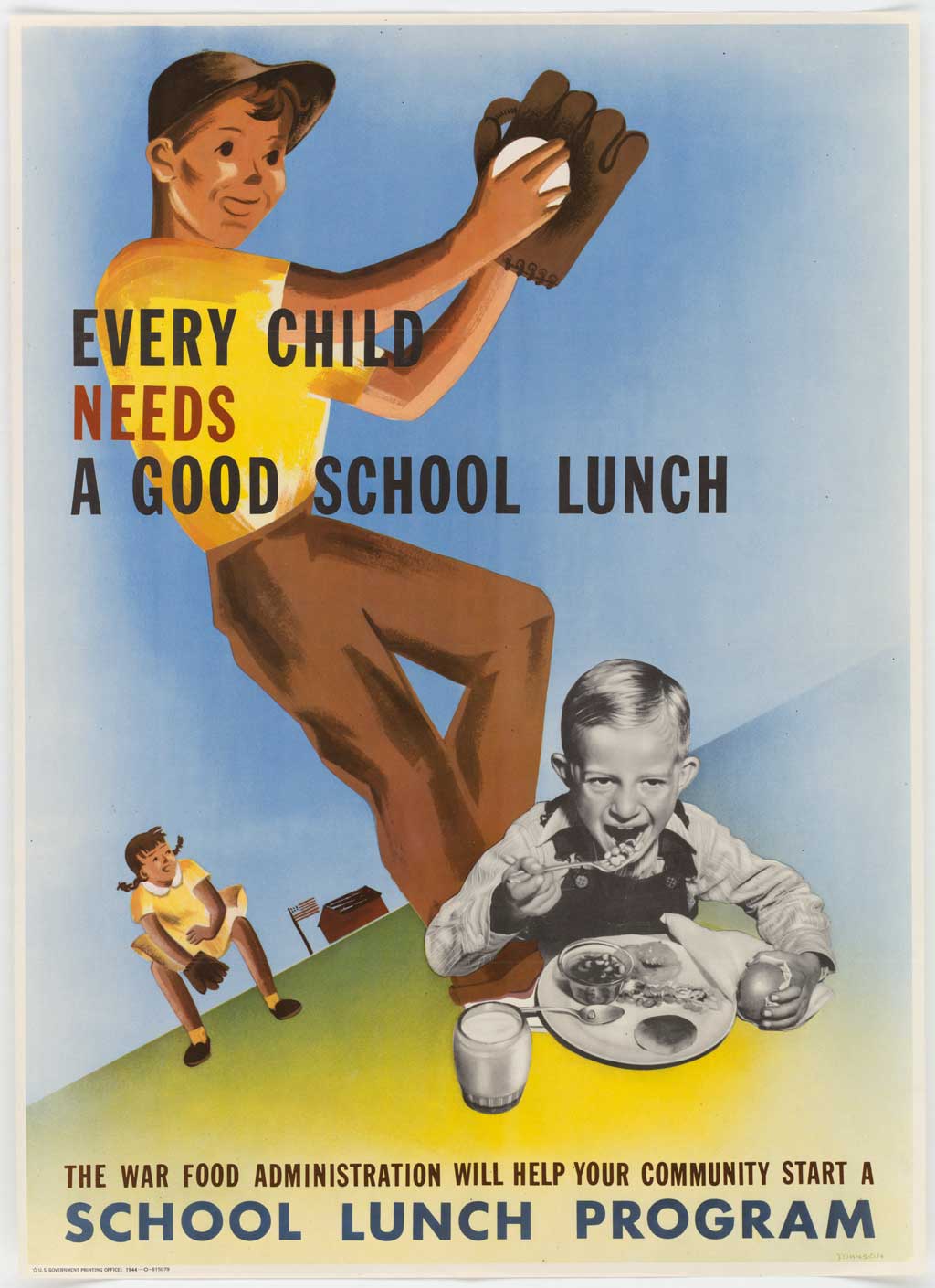
Press Kit: What's Cooking, Uncle Sam?
The Government's Effect on the American Diet
Select Images

Flying Camp Rations Broadside, 1776 The Revolutionary War rations promoted in this broadside included one pint a day of spruce beer, a drink made from spruce tips and molasses thought to prevent scurvy. For colonists not fully motivated by cries of "Freedom," the promise of generous rations was a major incentive to enlist.
National Archives, Records of the Veterans Administration

United States Food Administration Poster, ca 1918 During World War I, the Food Administration under Herbert Hoover promoted "Wheatless Wednesdays" and "Meatless Mondays." This poster suggests cottage cheese as a protein substitute. National Archives, Records of the United States Food Administration

Potatriots, ca. 1917-18 This inventive store display ca. 1917 -18 promotes the potato as a "good soldier" and recommends people eat it — uniform and all.
National Archives, Records of the United States Food Administration

Charles Wille, 1918 Charles Wille was sent to Leavenworth Federal Penitentiary for breaking the Oleomargarine laws.
National Archives, Records of the Bureau of Prisons

United States Department of Agriculture Nutrition Chart, 1943 Some of us might like to reinstate this food guide from World War II because butter has its own food group.
National Archives, Records of the Office of Government Reports

War Food Administration Poster, 1944 In its early years, school lunch was a child welfare program. Later it became a matter of national security. Malnourished children did not grow up to be good soldiers. In 1943 the War Food Administration took over—and dramatically expanded—the federal school lunch program.
National Archives, Records of the Office of Government Reports

Birdseye Patent Frozen food was not the instant success that Clarence Birdseye had anticipated. Few Depression-era kitchens had freezers. Business picked up after World War II, but it wasn't frozen fish or peas that were selling. It was frozen orange juice concentrate—a product that USDA scientists helped to improve.
National Archives, Records of the Patent and Trademark Office
PDF files require the free Adobe Reader.
More information on Adobe Acrobat PDF files is available on our Accessibility page.